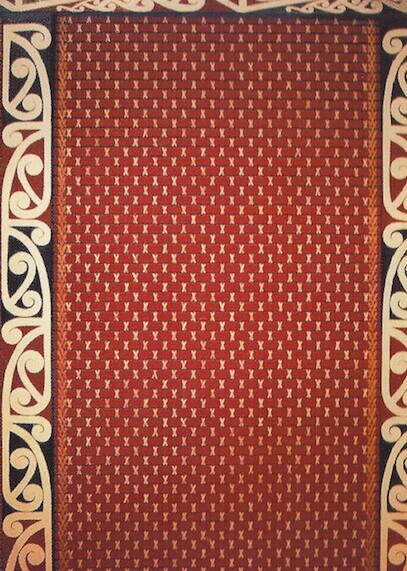TUKUTUKU PANELS
Modern Tukutuku panels are constructed using 'peg board' as the base, with thin slats of wood to give the impression of depth. The weaving material is flax and/or Kiekie which is stripped, boiled and dyed, traditionally using natural dyes found in the bush. In these panels ordinary commercial dye was used with pīngao the main source for yellow strands.
- Stylised draught pattern with Māori motifs, symbolising the coming together of two races - Māori and Pākehā - each complimenting the other. Raukumara - Two top patterns in Whanganui-mumu, leaves of the kūmara. The black represents the dying leaves - white the new - regeneration
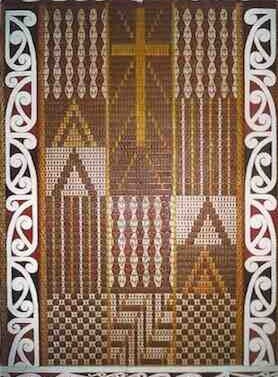
The main weaver stands in front of the board with an assistant behind passing the strands to form the required pattern. It takes many hours of concentrated work to complete. Pine Taiapa famed for his skill and knowledge in carving and decoration, stated that it would take two skilled women 60 hours for our panels which, traditionally, took 18 months to create.
- Represents Tane's quest into the heavenly places on an errand. The vertical lines plot his progress, the horizontal lines when he encounters obstacles symbolising our spiritual walk.
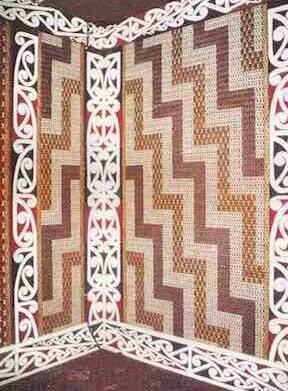
The main weaver stands in front of the board with an assistant behind passing the strands to form the required pattern. It takes many hours of concentrated work to complete. Pine Taiapa famed for his skill and knowledge in carving and decoration, stated that it would take two skilled women 60 hours for our panels which, traditionally, took 18 months to create.
- Pattern used by women to decorate dress - representing femininity.
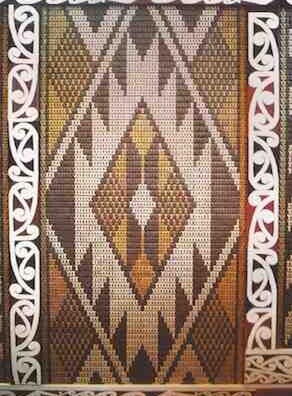
The patterns are not just decoration but have a deep spiritual meaning, which sometimes only the weaver can explain.
Kōwhaiwhai is used to surround and complete the tukutuku work. These are painted boards acting like a picture frame to set off the woven panel. On these surrounds the basic patterns represents the "koru", or New Zealand fern, and depicts the unrolling of the frond as asymbol of new life or new beginnings.
- Albatross' tears (it had some premonition it was being sacrificed). Black lines - tears of sorrow, Gold lines - tears of reward, White lines - tears of joy. Tokotoru - represents a message, the great message of the crucifixion of Christ.
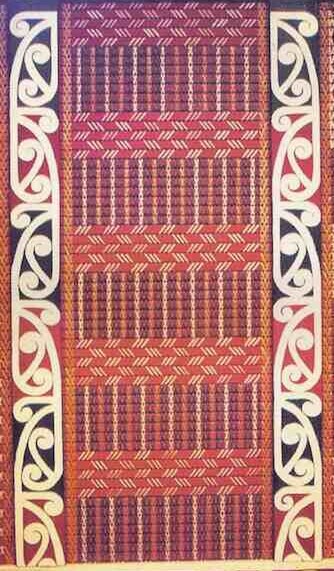
- Armpit, a challenge, masculinity.
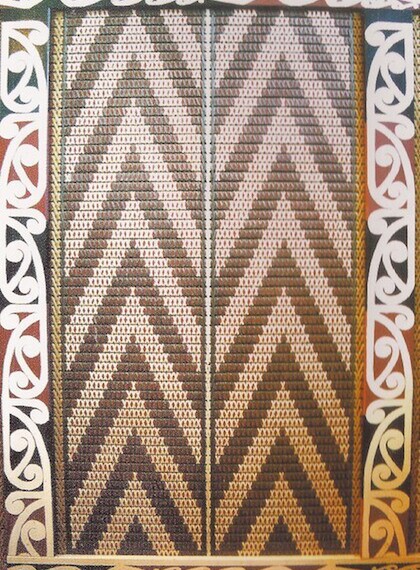
These panels were painted at the Opotiki College by the art teacher, Josie Mortensen, assisted by a student, Jacob Shelford and both tukutuku panels and kōwhaiwhai surrounds installed by Mr. Tom Parkinson.
- Displays a group of stars near the Milky Way known as the "Coal Sack" This pattern portrays fine weather and good relationships, and is sometimes used as a design for headbands and bodies.
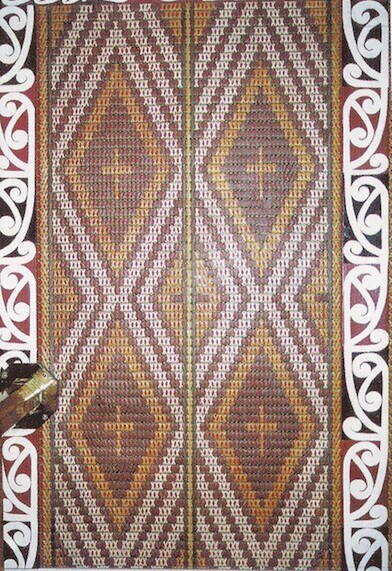
Represents millions of stars, our place in creation. The dying is always replaced by a new birth.
